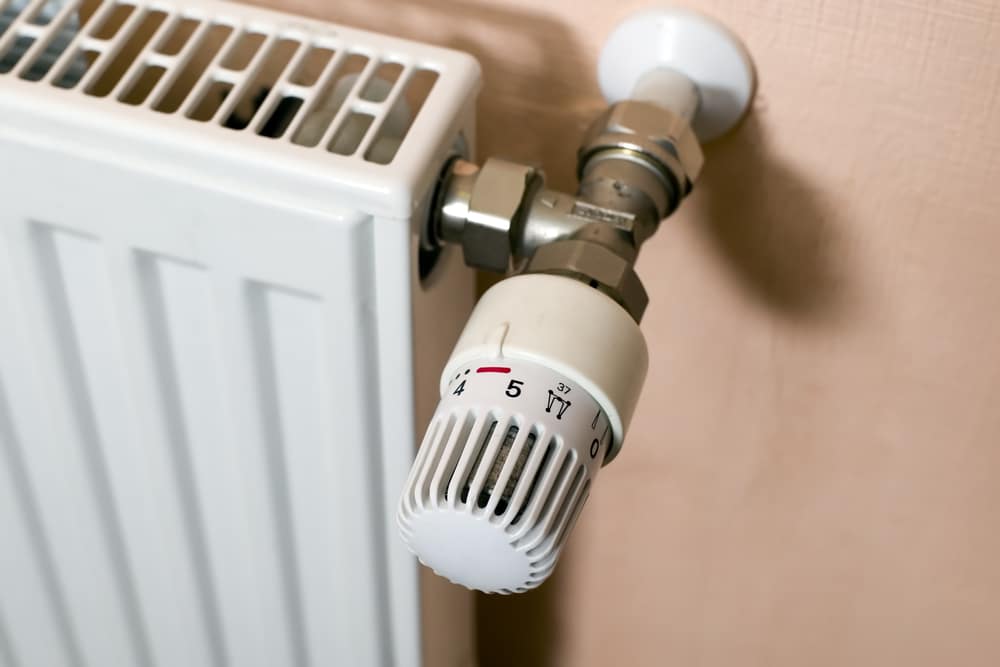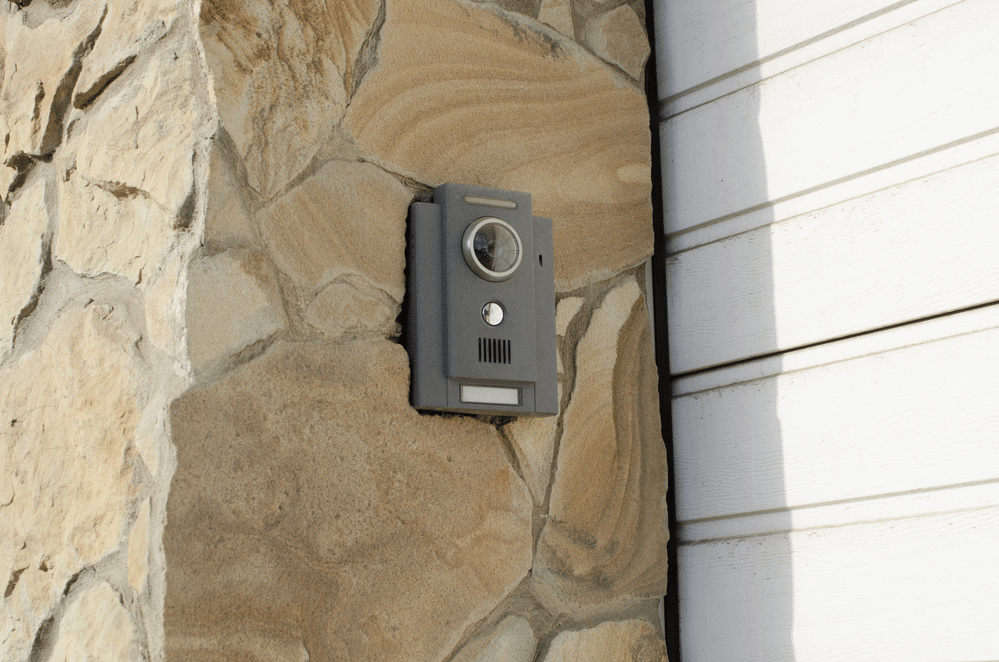Last Updated on
A thermostatic radiator valve is a special tool that adjusts the temperature in different spaces by changing the flow of hot water in a heating system.
They can be installed in various heating systems to control temperatures. Not to mention, different types of thermostatic radiator valves can be used for temperature regulation.
So, what is a thermostatic valve? This article will give you an insight into a thermostatic valve and show you the different components of this tool.
What Is a Thermostatic Valve?
With the many controls that a thermostatic radiator valve (TRV) offers, you can change the temperature settings and make it simpler to warm up a specific area. A TRV comes with a sensor (wax or liquid) that can detect the temperature in a room and regulate the flow of hot water based on the temperature readings. The flow of water will increase or decrease accordingly based on the overall temperature of the room.
For instance, if the temperature of a room drops below the normal or set temperature, the thermostatic radiator valve opens, letting water into the radiator. Hot water flows through it to regulate the temperature in a room.
On the other hand, if the temperature reaches a certain point while heating a room, the thermostatic radiator valve closes.
Main Parts of a Thermostatic Radiator Valve
Valve head
This part regulates the temperature in a specific space through the flow of water. It packs a self-regulating sensor that can detect the room temperature in a particular space or area. In some models, the sensor might be made from high-quality wax or liquid that can expand and contract according to changes in the air temperature.
The sensor is covered with heat-resistant moulding that protects it from harmful objects. The moulding can withstand the high temperatures that the sensor detects from a certain room.
Moreover, the valve head has a pin that moves when the valve opens or closes. If the temperature of a particular room increases, the sensor will detect the changes, after which the pin will move to close the valve. This movement reduces the amount of hot water passing through, not to increase the room temperature even further. On the contrary, if the temperature in a specific room drops due to cold weather conditions, the pin will move and open the radiator valve, letting hot water flow through the heating system and increasing the room’s air temperature.
Control Knob
Most TRVs come with a control knob, which makes it easier for you to adjust the temperature settings of your heating system. TRV knobs have different numerations/marks that guide you and control the temperature range.
The TRV marks can represent a certain temperature range. Once the TRV is connected to a radiator, it will offer various controls that can tune the temperature settings and save you from the effects of cold weather.
Two Main Types of Thermostatic Valves
Electronic Thermostat
As the name hints, these are TRVs that are powered by an electric current. Most smart thermostatic valves come with a charged battery that powers the body of the entire unit while regulating temperature.
Not to mention, smart thermostatic radiator valves are fitted with an electric sensor that acts as a thermostat and detects the temperature in a room. After that, the electric sensor shifts and opens or closes the valve based on the radiator’s readings.
Many TRVs also have an LCD screen that provides you with insight into different thermostat settings. They also have buttons that give you total control over these types of radiators.
You will find that electronic valves are quite easy to use and allow for easy adjustments to be made to your radiators.
Traditional/Conventional TRV
Unlike a smart thermostatic radiator valve, a conventional TRV is not powered by electricity and doesn’t have an LCD screen.
It is a simplified version of an electronic TRV and includes basic components such as a knob for adjusting temperature settings and a sensor for detecting room temperature.
Sensors fitted in traditional thermostatic valves are either made from a liquid or a mass that expands or contracts easily.
Different Types of TRV Connections
Since radiators have different designs and various types of inlets, you will find that different valves are designed to suit such inlets.
For instance, some radiators are manufactured with a side inlet, while others come with a middle inlet. Due to this, thermostatic valves might have different shapes.
Here are some of the different types of thermostatic valves based on their shape and design:
Angled TRV
Angled valves are pretty popular and are used in most households for temperature regulation. Just as the name hints, this type of TRV should be fastened to a radiator’s inlet at a certain angle. In most instances, the thermostatic valve might be fixed on the inlet at a 90° angle for maximum performance.
Angled thermostatic valves are suitable for pipes that are fitted on a wall and may also be suitable for use on radiator pipes that might be coming out of the floor.
Furthermore, angled valves can fit neatly on their inlets, making it easier for you to get a good-looking system.
Straight TRV
Straight thermostatic valves have a unique design that guides hot water in a straight path.
This type of thermostatic valve is quite compatible with radiator pipes fitted along the surface of your wall or your floor. For instance, if your pipes are fitted horizontally or vertically along the floor’s or wall’s surface, a straight TRV might be ideal for such pipes.
H-block TRV
Some radiators are designed with middle connection inlets for fitting thermostatic valves.
This design saves on space by getting rid of some pipework/inlets that are fitted on the sides of the radiator. H-block thermostatic valves can be used in radiators that come with middle inlets.
Unlike angled and straight valves, you will often find that H-block valves can be easily fastened and unfastened from a radiator.
Corner TRV
Corner thermostatic valves are ideal for angled installations. This valve can be connected to a pipe that is poking out of a particular surface. Not to mention, a corner valve has a compact design and can fit perfectly on an inlet without occupying too much space in a room.
Advantages of a Thermostatic Valve
Regulation of Temperature in Various Rooms
TRVs are quite efficient in regulating the temperature in different heating systems by determining the amount of hot water that will pass through to the radiator.
Unlike manual valves, TRVs have different components that work automatically, depending on the temperature of a certain room.
Such TRV components can detect the temperature of a specific room and then trigger the opening or the closure of the valve to enhance temperature regulation.
However, it might not be advisable to fit it in a bathroom due to the wide temperature fluctuations. We, therefore, recommend installing such units mostly in living rooms or bedrooms where the temperature will remain quite constant, and you don’t want always to keep re-adjusting the thermostat.
Once the preferred temperature is attained, the valve maintains this temperature. It is thanks to this automatic regulation that thermostatic valves can help you save a lot of energy. As a result, your energy cost will decrease, and you will spend less money on heating bills.
On the flip side, a manual valve may not be as energy efficient as a TRV when controlling a room’s temperature, meaning that you could end up spending more money on heating bills as you have no automatic regulation.
Affordability of Thermostatic Valves
Most of the valves that you find in your regular hardware store or online are quite affordable. However, their different designs come with varying price tags, so you need to watch out to choose the model that suits you and fits your radiators.
High-end thermostatic valves tend to offer you additional handy control features and, therefore, have a higher price tag than normal valves. On the other hand, standard thermostatic valves tend to offer the basic components that will regulate the temperature in different rooms.
Choice of Settings
Since thermostatic valves come with simple controls and settings, most valves can be adjusted easily.
Also, some thermostatic valves have particular parts that give you an insight into different temperature settings. For instance, most electronic thermostatic valves come with an LCD displaying the current temperature settings.
Additionally, thermostatic valves have calibrations that guide you as you are setting the temperature of different rooms. The calibrations represent different temperature ranges, making it easier for you to choose certain temperature settings.
TRV Designs
Thermostatic valves are available in different shapes and designs, which are compatible with different radiators and inlets, as we explored earlier on.
For example, angled thermostatic valves can be fitted on a radiator with pipes coming out of the wall. On the other hand, straight valves can best be installed on pipes that run vertically or horizontally along different surfaces.
There are also two different types of TRV systems that can be installed correctly on your radiator; electric thermostatic valves and traditional thermostatic valves. You can choose any type, depending on the type of radiator that you own.
Installation Process
Unlike other plumbing components, most thermostatic valves can be fastened to your radiator quite easily and can be installed in a short time. Not to mention, you don’t even have to use a lot of tools while fastening a TRV to your radiator.
Get a TRV for Your Heating System
Heating a room and controlling its ambient temperature with this type of valve is, in most cases, an affordable option as it reduces the money spent on bills.
Furthermore, unlike manual valves, these valves are quite energy-efficient, helping you save money. Not to mention, there are available in a huge number of different designs and can, therefore, be fixed to various types of radiators. Also, TRVs are quite affordable compared to other plumbing fittings and have a simple valve body that can be fitted to a heating system in a short period with simple tools.
All in all, TRVs are an excellent tool to have installed in your home. Their cost is minimal, especially when considering that you can save on energy bills in the long term. What is your opinion, and have you had any experience installing your TRVs?
Additional Resource
- How to Use a Palm Router
- How to Paint a Radiator
- What Is a Pruning Saw
- How to Use a Scroll Saw
- How Does a Wallpaper Stripper Work
Ian loves everything that revolves around the home improvement niche. He loves trying out new home appliances. He has also handled a lot of equipment and has a lot of insight. Plus, he’s worked on various home improvement projects that became a success.
If Ian isn’t busy working on his latest project, you can find him reading up about another one!



